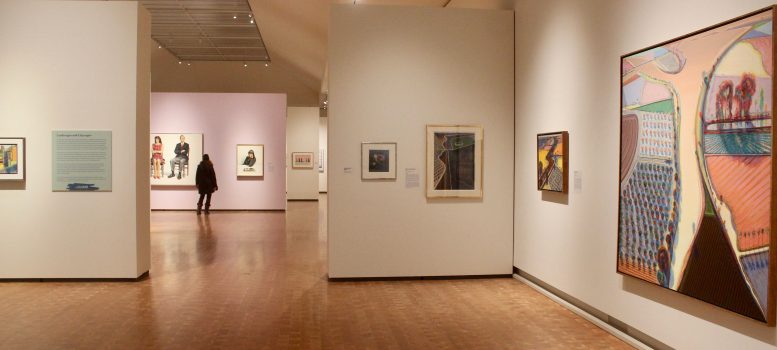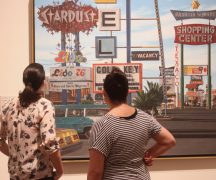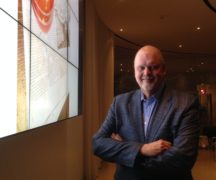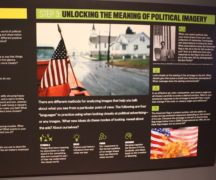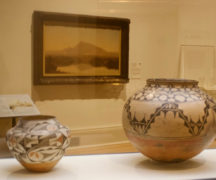By DAVID DUPONT
BG Independent News
With the area in the grip of a winter cold snap, the Toledo Museum of Art is offering a respite.
“Wayne Thiebaud 100: Paintings, Prints, Drawings” takes viewers away to sunny California, and provides plenty of comfort food along the way.
The show opened this weekend and continues through May 2.
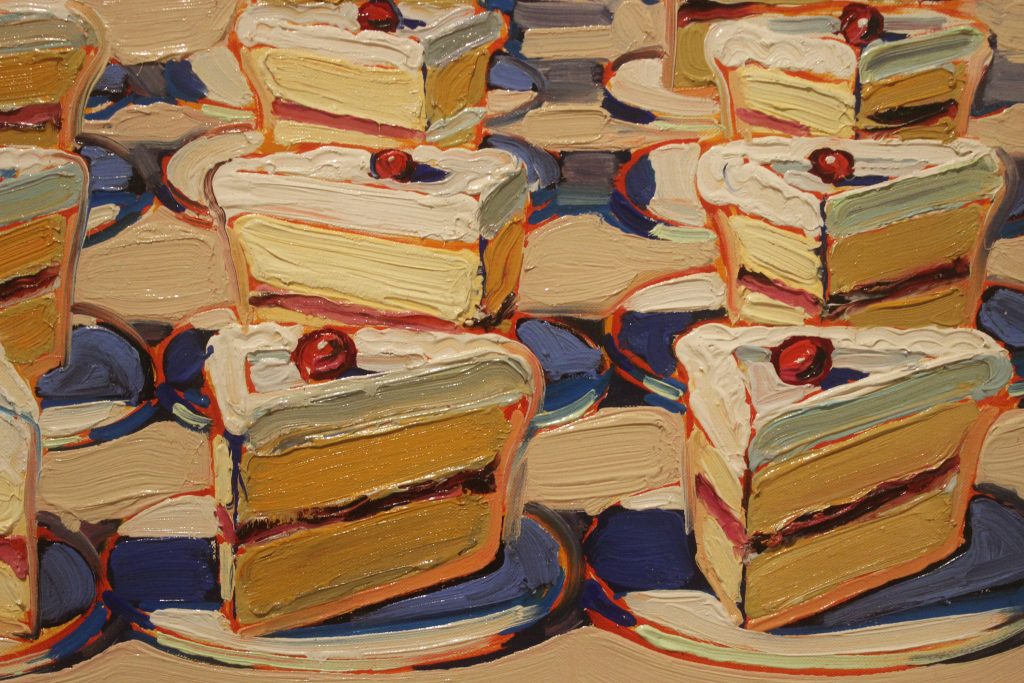
The exhibit celebrates the artist’s 100th year. He celebrated his 100th birthday in November, and to honor him, his hometown Crocker Gallery has assembled a show that features the sweep of Thiebaud’s work, including prints and drawings as well as the oil paintings for which he is best known.
The Crocker is the institution to do that—it first exhibited his work in 1946, and presented his first solo show in in 1951. Thiebaud still lives, and works, nearby.
Though he’s been on the scene for many years, Thiebaud’s work is ripe for misinterpretation.
His focus on food images, including the iconic “Pies, Pies,Pies,” as well as the “Roast Beef Dinner (Trucker’s Supper),” which is in the Toledo Museum’s permanent collection, led him to be associated with the Pop Art Movement. But while Warhol et al looked at their subjects from an ironic distance, Thiebaud looks through a haze of memory.
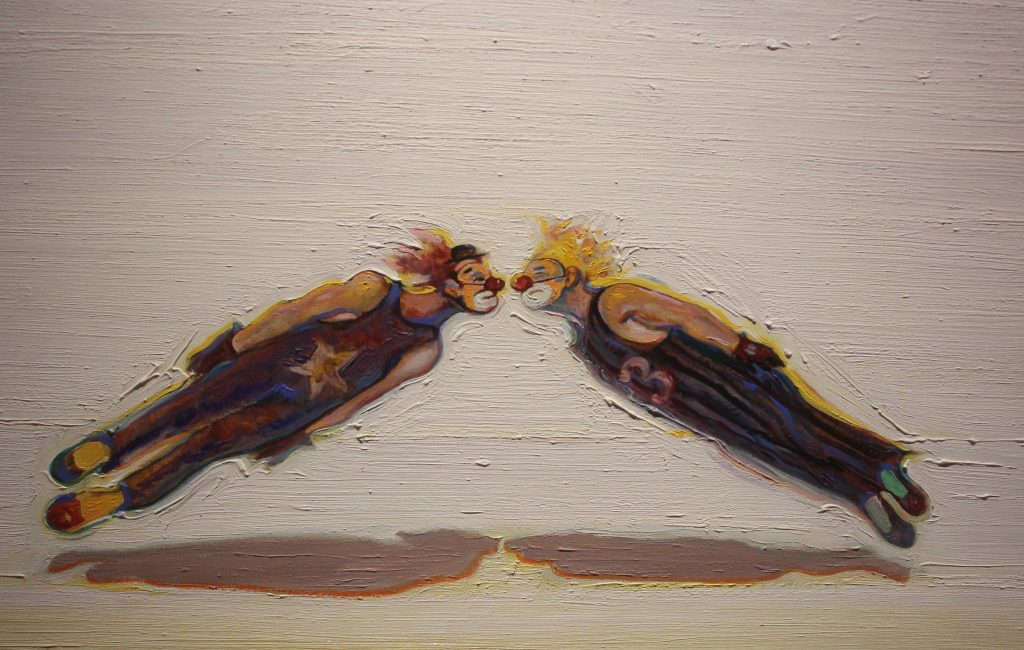
As detailed as his images are, they are not works from observation. Instead, the artist pulls these from his memory. His most recent work focuses on clowns he’d seen as a child in the 1930s in a traveling circus. They are neither sentimental nor horrific like those depicted Judith Schechter in her recent exhibit of stain glass. Set within plain backgrounds they emerge bristling with life.
The fascination with pies, isn’t with pies themselves, but with their geometry, and their brilliant hues. Thiebaud finds so much joy in these images of the everyday, whether food or rows of eye glasses.
“He wants us to see the ordinary as extraordinary,” said Diane Wright, the museum’s interim director of curatorial affairs.
Seeing the works in person brings that out in its fullest. Thiebaud’s brushstrokes have a thick, creamy quality to them, much like the frosting on his pastries, or the clown’s makeup.
This visual rhyming makes the work more vivid.
That’s why it’s important to see them in person, Wright said. A photographic reproduction flattens them out not just visually, but emotionally.
Those brush strokes speak to the inner energy of the paintings.
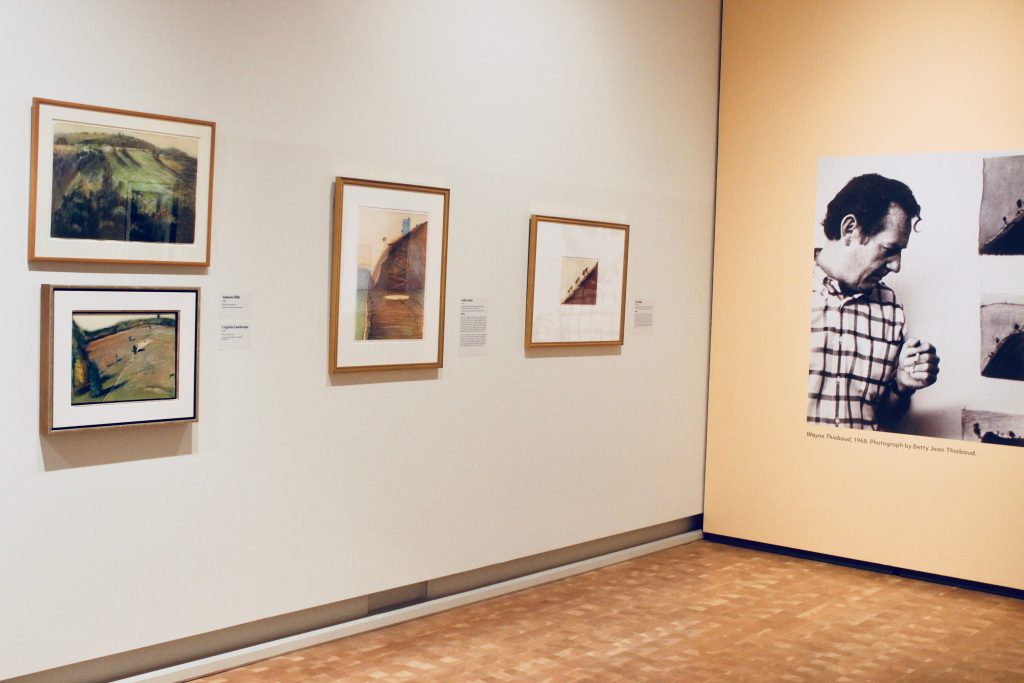
Back in the late 1950s, Thiebaud did venture to New York City where Abstract Expression was all the rage.
Its influence is seen in “The Sea Rolls In,” a dark painting from 1958, executed with thick strokes. The pivot in his mature work appears in an unlikely form, a mural he was commissioned to design in 1959 for a utility building in Sacramento. Completed in 1961, it was his only mural and was refurbished in 2020.
Here the light of California shines in.
Even the indoor scenes, such as a still life of an office desk, reflect the Golden State.
Thiebaud did not confine himself to still life.
He ventured into portrait painting, for these he did use live models often his wife Betty Jean. She’s featured in three large canvases. And his portrait of a couple in swim suits is quintessentially Californian. As a child in the 1960s, this is what I imagined Anglo Californians looked like.
Thiebaud also painted the landscape — farm fields, a cityscape viewed from above, and, of course, a traffic jam.
And with his intensity of focus, Thiebaud puts the viewer in te scene. And given out frigid temperatures, that’s welcome – well maybe not the traffic jam, unless you had a box of those confections with you to munch on while you wait.
***
The exhibit is free for members and $10 for nonmembers. Ticket discounts for military and seniors ($7); college students and youth ages 5-17 ($5); and children ages four and younger (free) are available. Healthcare workers and first responders may receive one free ticket to the exhibition with proof of ID from Feb. 6-May 2. On Friday, Feb. 12, and Saturday, Feb. 13, from 5 to 8 p.m., visitors can buy one exhibition ticket and get one ticket of equal or lesser value for free. Finally, youth ages 5-17 can visit for free April 2-11.

